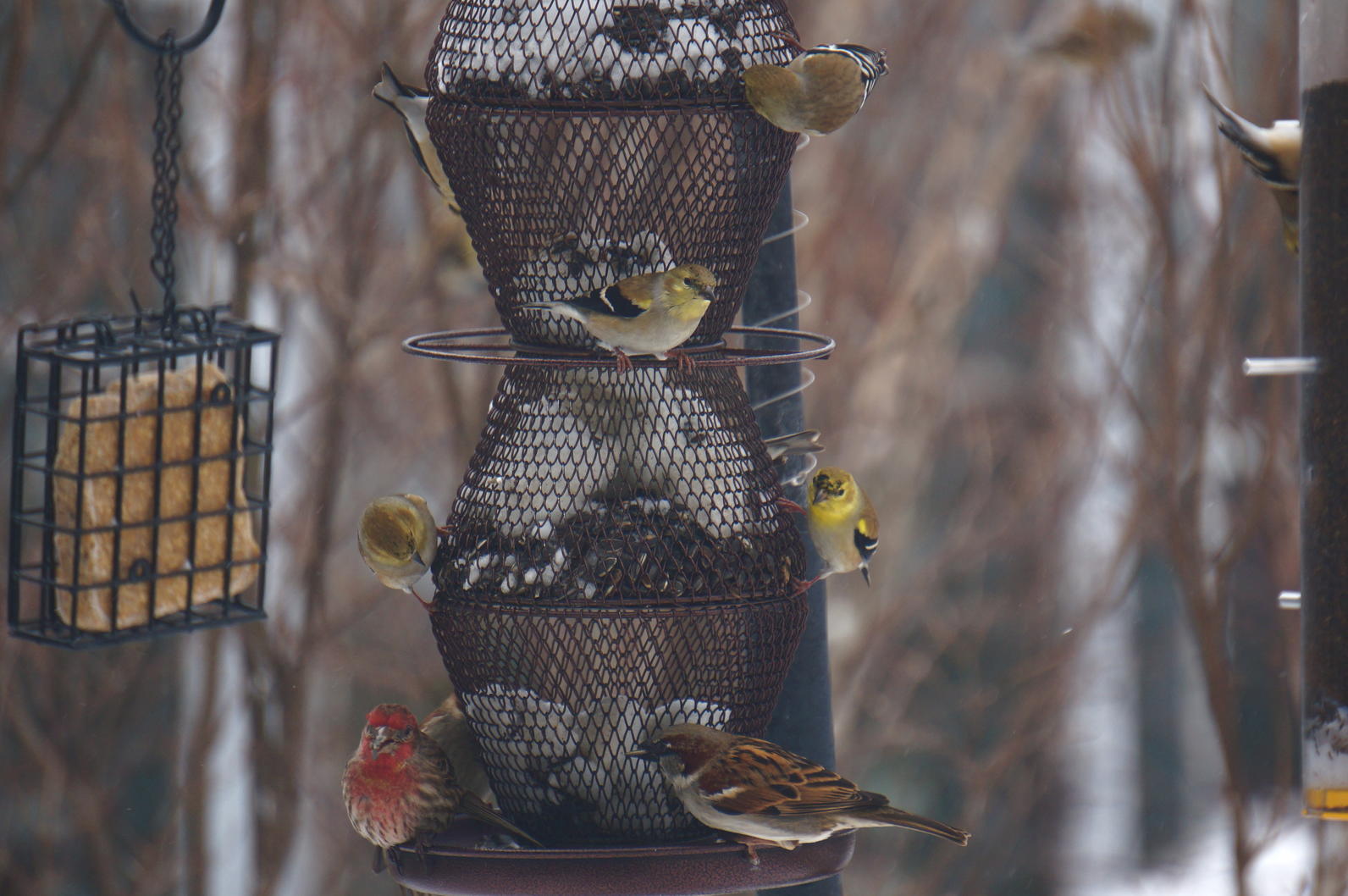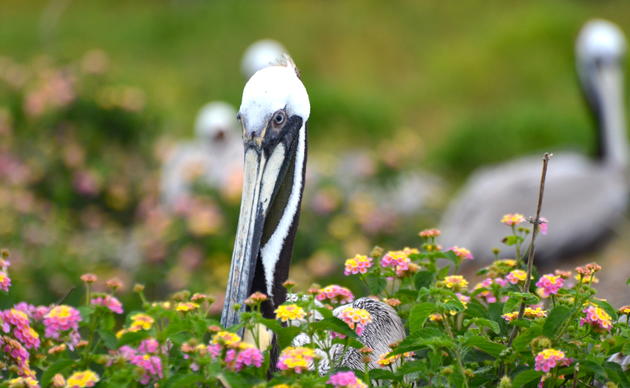Bird-friendly Backyards

Feeders
Native plants are the preferred choice when it comes to providing food for birds, however, feeders are often used as a supplemental food source for granivorous birds during winter and hummingbirds in the summer. In order to protect the health of the birds using your feeders, you should clean and disinfect them regularly. Cleaning feeders (and birdbaths) prevents disease from spreading. Each of your feeders should be washed with a nine to one water-bleach solution at least twice a month. Hummingbird feeders can be washed with hot water and a brush each time you replace the sugar solution (as often as every day in the hottest weather). Place all feeders less than 3 feet from a window, or more than 30 feet away, in order to reduce the risk of window collisions. Click the following links to find out more about feeding hummingbirds, using feeders, the different types of feeders, and which seeds to supply.
While many birds can benefit from yard feeders, the food we give ducks and geese actually harms them. You should not feed wild ducks or geese anything, especially bread! Unlike hanging backyard feeders, feeding waterfowl can lead to a variety of issues both for the birds and for people. Visit this page to learn more.
Bird Baths, Maintenance, and Nest Boxes
- Although birds can get some moisture from their food, most still need water for drinking and bathing, especially in Texas. The best type of birdbaths are those that mimic natural baths, such as puddles. Recirculating or running water can help discourage mosquito activity.
- A great additional source of cover in your yard is a brush pile. Collect fallen limbs and branches to create the pile anywhere in your native garden. A brush pile can be more than just a random heap of sticks; get creative and artistic!
- Providing nest boxes is a great way to invite breeding birds into your backyard. Many have specific preferences when it comes to both the location and type of box, so do your research about those best suited to your yard.
- Allowing dead trees, known as snags, to remain standing in your yard whenever possible will provide natural nesting and feeding opportunities for birds like woodpeckers.
Threats
An important aspect of a bird-friendly garden is removing human-related threats whenever possible. Many common garden pesticides lead to bird deaths by poisoning both the insects and plant material that serve as their food supply. As you create your native garden, you are sure to attract more insects to your yard; however, you will also be attracting the natural predators that keep their numbers under control, so the use of insecticides is both unnecessary and counterproductive to a bird-friendly yard. Eliminating herbicides and pesticides also benefits our insect pollinators, some of which, like native bees and the monarch butterfly, are in decline.
Another risk to birds in backyards is domestic predators, especially cats. Feral and free-roaming cats are the number one human-related cause of death to birds in the United States. Moreover, cats face a variety of dangers outside, from cars to larger predators to disease. Keeping your cat indoors is the best option for the safety and health of both your cat and birds.
As you create bird habitat in your yard, be sure to keep an eye out for potential window collision issues. Reflections of plants and trees can draw birds into window glass, so be alert for problem windows. Learn more about how to reduce the risk of building collisions.
How you can help, right now
Join Audubon Texas Today
Becoming a member supports our local work protecting birds and the places they need.
Consider a Legacy Gift for Texas
Planned gifts and bequests allow you to provide a lasting form of support to Audubon Texas.
Subscribe to Our Newsletter
Subscribe to our newsletter for updates about Audubon Texas's conservation work, and news about our activities and local events.




